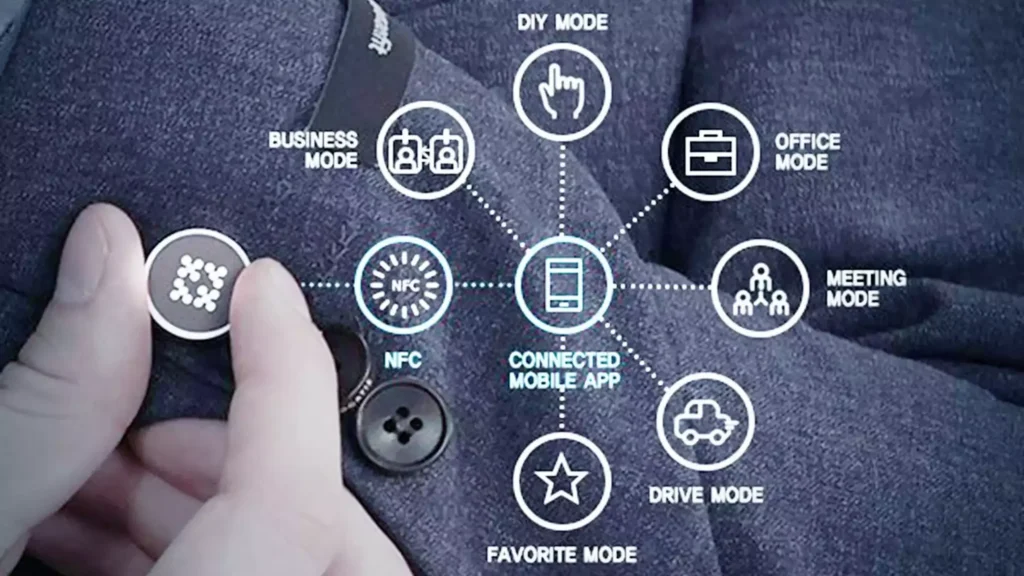Latest Clothing Technology The Future Woven In: Exploring the Latest Innovations in Clothing Technology
The world of fashion, often perceived as a realm of fleeting trends and artistic expression, is undergoing a profound transformation driven by cutting-edge technology. Far beyond mere aesthetics, the latest advancements in clothing technology are reshaping how garments are designed, produced, worn, and even disposed of. From smart textiles that monitor health to sustainable production methods, innovation is weaving a new narrative for the industry, promising a future where clothing is more functional, personalized, and environmentally responsible.
At the forefront of this revolution are smart textiles and wearable technology. These are not just gadgets attached to clothing; they are fabrics intrinsically integrated with electronics, sensors, and advanced materials. Imagine a shirt that tracks your heart rate and respiration during a workout, or a jacket that adjusts its temperature based on ambient conditions. Companies are developing garments with embedded sensors that can monitor vital signs, track movement, and even detect specific health conditions, offering real-time data for athletes, patients, and everyday users. These advancements are pushing the boundaries of what clothing can do, transforming it into a personalized health and performance monitor. The integration of the Internet of Things (IoT) further enhances this, allowing smart clothing to connect with other devices and platforms, creating a seamless ecosystem of data and insights. For example, a smart athletic shirt might communicate with your fitness app to optimize your training regimen, or a medical garment could alert healthcare providers to abnormal readings.
Beyond sensing, smart textiles are also becoming responsive and adaptive. Innovations include fabrics that can change color or pattern in response to stimuli like light, temperature, or even mood, offering a new level of personal expression and dynamic style. Self-healing fabrics, capable of repairing small tears or resisting stains, are also on the horizon, promising to extend the lifespan of garments and reduce waste. These advancements aim to make clothing more durable, versatile, and low-maintenance, contributing to a more sustainable consumption cycle. Consider the potential impact on outdoor gear, where a self-healing jacket could withstand harsher conditions and last significantly longer.
The journey of clothing from concept to consumer is also being revolutionized by technology. 3D printing is emerging as a game-changer in fashion manufacturing. This additive manufacturing process allows designers to create intricate, complex garments and accessories layer by layer, with minimal material waste. This not only opens up new possibilities for customized designs but also significantly reduces the environmental footprint associated with traditional textile production. Brands are increasingly exploring 3D-printed elements in their collections, and the technology is poised to facilitate on-demand production, reducing overstocking and further minimizing waste. For more insights into how technology is transforming manufacturing, explore the impact of additive manufacturing in various industries.
Complementing 3D printing, Artificial Intelligence (AI) and machine learning are streamlining the design and production processes. AI algorithms can analyze vast amounts of data, from social media trends to sales figures, to forecast demand and predict fashion trends with remarkable accuracy. This helps brands optimize inventory, reduce overproduction, and make more informed design decisions. AI is also being used in generative design, where algorithms can create new garment patterns and styles, assisting designers in their creative process. This data-driven approach is leading to more efficient supply chains and a greater alignment between consumer demand and production. You can read more about how AI is reshaping various aspects of our lives in this article on AI’s pervasive influence.
Sustainability remains a paramount concern, and technology is providing innovative solutions. Beyond reducing waste through optimized production, there’s a significant focus on developing eco-conscious materials. Researchers are creating innovative fabrics from surprising sources like algae, mushrooms, agricultural waste (such as coffee grounds or banana fibers), and even recycled fishing nets and oyster shells. These bio-based and recycled materials offer alternatives to traditional resource-intensive fibers, significantly reducing environmental impact. Furthermore, technologies like waterless dyeing and plant-based pigments are minimizing water consumption and chemical pollution in the dyeing process. The concept of “circular fashion,” where garments are designed for recycling and reuse from the outset, is gaining traction, supported by technologies that enable efficient sorting and processing of textile waste. For a deeper dive into sustainable practices, consider exploring resources on the circular economy.
The retail experience itself is being transformed by technology. Augmented Reality (AR) and Virtual Reality (VR) are enhancing online and in-store shopping. Virtual fitting rooms allow customers to “try on” clothes digitally, seeing how garments would look on them without the need for physical samples. This not only improves the online shopping experience but also reduces returns and minimizes the need for physical inventory in stores. Virtual showrooms and digital fashion are also gaining prominence, particularly within the metaverse, offering new avenues for brands to showcase collections and consumers to express their digital identities. These technologies are blurring the lines between the physical and digital worlds of fashion.
Finally, Blockchain technology is emerging as a crucial tool for enhancing transparency and traceability within the fashion supply chain. By creating an immutable record of a garment’s journey from raw materials to the finished product, blockchain can verify ethical sourcing, combat counterfeiting, and provide consumers with greater confidence in the authenticity and sustainability claims of a brand. This level of transparency is becoming increasingly important to consumers who demand ethical and environmentally responsible practices from the brands they support.
In conclusion, the latest innovations in clothing technology are fundamentally reshaping the industry. From intelligent fabrics that enhance our well-being and performance to sustainable production methods and immersive retail experiences, technology is driving a paradigm shift. The future of clothing is intelligent, sustainable, personalized, and seamlessly integrated with our digital lives, promising a wardrobe that is not only stylish but also smart, ethical, and forward-thinking.
Latest Clothing Technology
Explore more with us !



Pingback: 10 Inspiring Ways LEDs Brighten Our Future